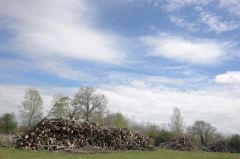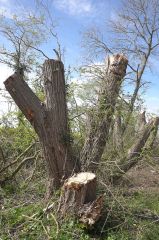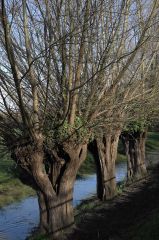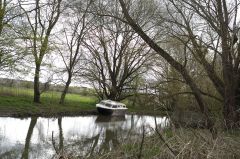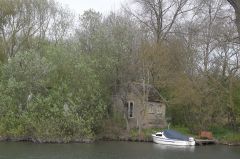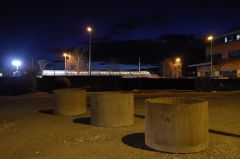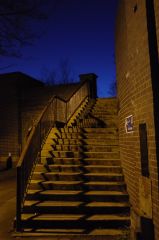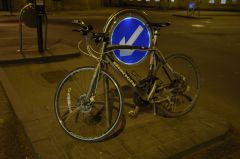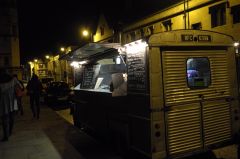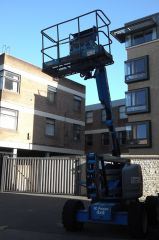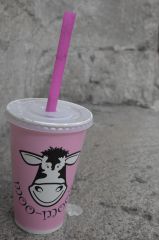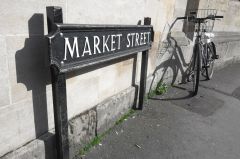
Colin1974
Members-
Posts
80 -
Joined
-
Last visited
Profile Information
-
Member Title
Benutzer
-
Gender
Male / Männlich
-
Location
Oxford, UK
-
Interests
Photography
Walking -
Country
United Kingdom
Converted
-
City
Oxford, UK
-
Hobbies
Photography, Walking
-
Job
Nursing Assistant
-
Your Leica Products / Deine Leica Produkte
Leica M240
Leica 50mm f/2 (m-mount)
leica 90mm f/2.8 tele-elmarit (m-mount)
Recent Profile Visitors
The recent visitors block is disabled and is not being shown to other users.
-
For analogue users, I'd like to recommend an iPhone app: "Lux - Professional Light Meter for Film." There are other apps available, but this is free, as well as highly accurate, but is awkward to use at first. There are many apps that mimic a light meter, some free, some paid for; some better than others. That saves me another £200!
-
Hello, I'm back. I've absorbed all this great advice and come up with this: 1) Tie together thin, light metal tubing into a tall, slender frame (around 2 metres in height). 2) Wrap an over-sized shower curtain around the frame, then attach it to the frame using highly adhesive insulation tape, leaving the front flaps as an opening: you now have a make-shift film drying tent. 3) Hang long, narrow wooden poles across the top, tape on 2-4 paper clips which have been straightened out with a hook left on the hanging end. 4) (For hard water use) Use filtered water for all chemical mixes and washes; buy a large water canteen and use it to store a ready supply. 5) Hang the developed negatives from the hook end of the paper clips (for 35mm, use the uppermost sprocket hole; for M/F film, use a peg of some sort that can be hung up); then close up the front flaps of the curtain, place a damp towel over then top of the frame and stand it on the floor on top of another damp towel. It's too early yet to see whether this is the perfect solution, but my local hardware store will find me to be a very profitable customer! Once again, thanks to my L-C-F buddies for all this tremendous advice which I wouldn't have otherwise considered. If there are any further problems, I'll keep you posted. Colin.
-
I'm always amazed at the quality of advice on this forum - thanks! I'll try the pipe method and see how it goes. Once spots are bedded down on the negative, they are almost impossible to remove. I think this is the most difficult aspect of darkroom work, looking after the negatives. Anyway, thanks for all your advice, guys, and any further tips are always welcome. Colin.
-
After 6 months' rest, I've come back to darkroom work with a fresh pair of eyes. I need some advice on a teething problem: I'm still getting particles on my negatives! I'm using a 6ft by 6ft space with limited ventilation. I also live in a hard water area. I've started using a water filter and have had several goes at cleaning the negative culprits, but with limited success. Is it a good idea to accept, within reason, the imperfections of analogue prints, or are there some idiot-proof methods for looking after negatives? Colin.
-
I'm using my bathroom as a darkroom. Use ventilation and a portable fan to keep the air fresh (it might be an idea to do darkroom work during autumn/winter), use microfibre cloths for gently cleaning negative and cotton gloves for handling them, make sure negatives are stored in correctly sized sleeves within a folder. I would recommend Kaiser or LPL enlargers: make sure the one you get takes lightbulbs which are still commercially available, as most were manufactured before regulations on bulbs were tightened up (depending on what country you live in). Have fun! Colin
-
Tell me your camera history, from FNG* to present day
Colin1974 replied to Colin1974's topic in Customer Forum
Thanks, I've really enjoyed reading these replies. I used to own up to 100 different square & circular filters and adapter rings in all different grades, colours, and various colour & grade combinations - ridiculous! I now only use UV clear and polarising filters. As for lenses, at any one time, my kit bag could have crushed an elephant! Happy days - I don't think! Colin- 23 replies
-
I've been into photography from August 2008: relatively speaking, I am an FNG* (just look it up!) I would be interested to know peoples' history of camera models and what they were used for. Here's mine: Nikon D40 - perfect newbie camera with both auto and manual functioning, and in-camera editing. Nikon P100 - megazoom and nothing else to recommend it. Canon PowerShot SX110 IS - decent point and shoot. Canon PowerShot SX30 IS - huge zoom, lots of bells and whistles. Nikon Coolpix S9100 - point and shoot, pocket size, decent zoom. Minolta Dynax 5 - my first 35mm camera, very steep learning curve. Zenit ET - manual 35mm SLR, starting to learning old analogue skills. Casio EX-H15 - although low end by current standards, Casio seemed to produce some decent models at the time. Minolta Dynax 7 - an upgrade on the Dynax 5. Sony A500 - excellent dSLR with advanced features, compatible with Minolta lenses. Canon G9 - advanced compact, small sensor, yet surprising image quality. Fuji HS10 - excellent bridge camera which had a habit of freezing! Leica V-LUX - one of the best bridge cameras, thank God for LeicaSonic! Fuji X-E1 - much heralded compact system camera, used it for a while, but it's not that good once you start putting it through it's paces. Minolta Dynax 9 - incredibly advanced 35mm SLR, a joy to use. Sony A900 - a great dSLR, stunning film-like images. Leica M6 - a classic, end of story. Leica M9 - great model, had to send back as I couldn't get to grips with it! Voigtlander Bessa R2 - aside from build quality (still better than most), just as good as any Leica 35mm RF. Leica M4 - the beginning of my darkroom obsession! Pentax 645n - a great introduction to medium format, still holding its well-deserved value. Hasselblad 500c - another all-time classic, ideal way to learn all the core skills. Nikon F - the original and, some would say, still the best! Over the years, all the cameras have been exchanged, sold used, or put on commission sale at varios dealers. I have learned how to spot a bargain, then sell it for a decent price or do a good trade-in. .....and my current line-up Leica X2 - stunning images, KISS-Keep It Simple Stupid! Leica X-Vario - stunning lens, simple to use (like me!) Nikon F2 - back to using 35mm after a break! For the record, I have certain problems of a psychiatric nature, including obsessive tendencies, as you can see! Thank you and have a nice day!
- 23 replies
-
What is the greatest bargain you've ever purchased? Nearly a year ago, I bought a mint X2 (no outer box or software) with grip and spare battery for £450. A few months later, I got an X-Vario with grip (also mint), but no packaging or software, for £850. Colin.
-
Hello, I'm having problems uploading my photos to the gallery. When I press "Upload", there is now no option to create a new album, only to choose from my existing ones. Can anyone help me out with this? Thanks, Colin1974.
-
Colin1974 started following rural17.jpegweb , rural13.jpegweb , rural2.jpegweb and 7 others
-
-
-
-
Yes! I'm now getting the hang of this! It'll be useful, as I'm doing a photography project for a mental health charity and I'm saving both web and print versions of each image. Best £65 I've spent in a long time! Thanks, Colin
-
Guys, thanks for all your advice. I'm still getting to grips with this, as you can see. I'm having fun finding my way around the software but it really is a new thing for me. I'll know who to come to for further advice. Cheers! Colin.
-
Thanks for the replies. The size settings are: 1000 pixels width; 1000 pixels height; 300 pixels per inch. Colour Space: sRGB; No size limit. Quality: 100. Export to: hard drive C. What is the best size setting for printing? Thanks, Colin.


